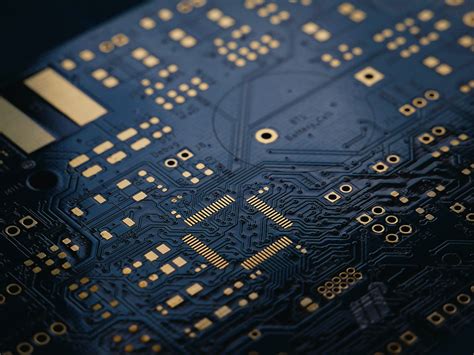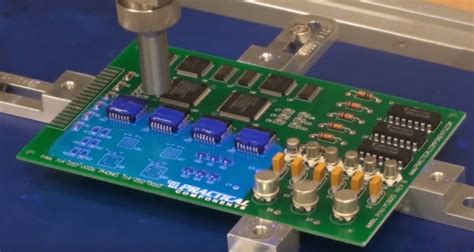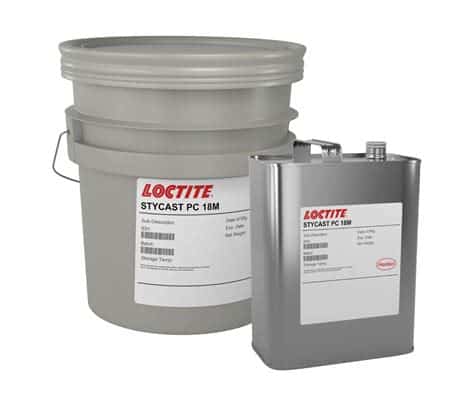Introduction to PCB Conformal Coating
Printed circuit boards (PCBs) are essential components in modern electronic devices. To ensure their longevity and reliability, it is crucial to protect them from environmental factors such as moisture, dust, and chemicals. This is where PCB conformal coating comes into play. Conformal coating is a thin protective layer applied to the surface of a PCB to shield it from external elements and prevent damage.
In this article, we will explore the various types of PCB conformal coatings available and help you determine which one best suits your new board. We will discuss the advantages and disadvantages of each coating type, their application methods, and the factors to consider when selecting the right coating for your specific needs.
What is PCB Conformal Coating?
PCB conformal coating is a thin, protective layer applied to the surface of a printed circuit board. Its primary purpose is to shield the PCB from environmental factors that can cause damage or affect its performance. These factors include:
- Moisture and humidity
- Dust and debris
- Chemicals and solvents
- Extreme temperatures
- Mechanical stress
The coating conforms to the contours of the PCB, covering all components and exposed areas, creating a barrier between the board and the external environment. This protective layer helps to prevent short circuits, corrosion, and other issues that can lead to PCB failure.
Benefits of PCB Conformal Coating
Applying a conformal coating to your PCB offers several benefits:
-
Enhanced protection: Conformal coatings provide a barrier against moisture, dust, and chemicals, reducing the risk of damage to the PCB.
-
Improved reliability: By shielding the PCB from environmental factors, conformal coatings help to extend the lifespan of the board and improve its overall reliability.
-
Increased performance: Conformal coatings can help to reduce the effects of electromagnetic interference (EMI) and radio frequency interference (RFI), improving the performance of the PCB.
-
Cost-effective: Applying a conformal coating is a cost-effective way to protect your PCB, as it can prevent expensive repairs or replacements due to environmental damage.

Types of PCB Conformal Coatings
There are several types of conformal coatings available, each with its own unique properties and advantages. The most common types of PCB conformal coatings are:
- Acrylic
- Silicone
- Polyurethane
- Epoxy
- Parylene
Let’s take a closer look at each of these coating types.
1. Acrylic Conformal Coating
Acrylic conformal coatings are widely used in the electronics industry due to their excellent electrical insulation properties and ease of application. They offer good protection against moisture, dust, and chemicals, and can be easily removed for repairs or rework.
Advantages of Acrylic Conformal Coating
- Excellent electrical insulation
- Good moisture and chemical resistance
- Easy to apply and remove
- Fast drying time
- Cost-effective
Disadvantages of Acrylic Conformal Coating
- Limited temperature range (-40°C to 125°C)
- Less flexible compared to other coatings
- May crack under mechanical stress
2. Silicone Conformal Coating
Silicone conformal coatings are known for their excellent flexibility and high-temperature resistance. They provide good protection against moisture, chemicals, and extreme temperatures, making them suitable for applications in harsh environments.
Advantages of Silicone Conformal Coating
- Excellent flexibility
- High-temperature resistance (-40°C to 200°C)
- Good moisture and chemical resistance
- Easy to apply and repair
Disadvantages of Silicone Conformal Coating
- Lower dielectric strength compared to other coatings
- Difficult to remove
- More expensive than acrylic coatings
3. Polyurethane Conformal Coating
Polyurethane conformal coatings offer a balance of properties, combining the advantages of acrylic and silicone coatings. They provide good protection against moisture, chemicals, and abrasion, and have a wide operating temperature range.
Advantages of Polyurethane Conformal Coating
- Good moisture and chemical resistance
- Excellent abrasion resistance
- Wide operating temperature range (-50°C to 125°C)
- Good flexibility
Disadvantages of Polyurethane Conformal Coating
- Longer curing time compared to acrylic coatings
- Can be difficult to remove
- May yellow over time
4. Epoxy Conformal Coating
Epoxy conformal coatings are known for their excellent chemical resistance and high mechanical strength. They provide superior protection against moisture, chemicals, and abrasion, making them suitable for harsh industrial environments.
Advantages of Epoxy Conformal Coating
- Excellent chemical resistance
- High mechanical strength
- Good moisture resistance
- Wide operating temperature range (-50°C to 150°C)
Disadvantages of Epoxy Conformal Coating
- Difficult to remove
- Brittle and less flexible compared to other coatings
- Longer curing time
- More expensive than acrylic and silicone coatings
5. Parylene Conformal Coating
Parylene conformal coatings are unique in that they are applied through a vapor deposition process, resulting in a thin, uniform, and pinhole-free coating. They offer excellent protection against moisture, chemicals, and extreme temperatures, and are biocompatible, making them suitable for medical applications.
Advantages of Parylene Conformal Coating
- Excellent moisture and chemical resistance
- Uniform, pinhole-free coating
- Wide operating temperature range (-200°C to 200°C)
- Biocompatible
- Good dielectric properties
Disadvantages of Parylene Conformal Coating
- Expensive application process
- Requires specialized equipment
- Difficult to repair or rework

Comparison of PCB Conformal Coating Types
To help you select the best conformal coating for your new PCB, let’s compare the properties of the different coating types:
| Property | Acrylic | Silicone | Polyurethane | Epoxy | Parylene |
|---|---|---|---|---|---|
| Moisture Resistance | Good | Good | Good | Good | Excellent |
| Chemical Resistance | Good | Good | Good | Excellent | Excellent |
| Temperature Range | -40°C to 125°C | -40°C to 200°C | -50°C to 125°C | -50°C to 150°C | -200°C to 200°C |
| Flexibility | Fair | Excellent | Good | Poor | Good |
| Abrasion Resistance | Fair | Fair | Excellent | Good | Good |
| Ease of Application | Easy | Easy | Moderate | Moderate | Difficult |
| Ease of Removal | Easy | Difficult | Moderate | Difficult | Difficult |
| Cost | Low | Moderate | Moderate | High | High |

Factors to Consider When Choosing a Conformal Coating
When selecting a conformal coating for your new PCB, consider the following factors:
-
Environmental conditions: Assess the environmental factors your PCB will be exposed to, such as moisture, chemicals, and temperature extremes, and choose a coating that provides adequate protection.
-
Application requirements: Consider the ease of application, curing time, and the equipment needed for each coating type. Some coatings, like parylene, require specialized equipment and may not be suitable for all applications.
-
Rework and repair: If your PCB may require future rework or repairs, choose a coating that is easy to remove, such as acrylic or polyurethane.
-
Cost: Evaluate the cost of the coating material and the application process. While some coatings may be more expensive upfront, they can provide better long-term protection and cost savings.
-
Compliance with standards: Ensure that the chosen coating complies with relevant industry standards and regulations, such as IPC-CC-830 or MIL-I-46058C.
Application Methods for Conformal Coatings
There are several methods for applying conformal coatings to PCBs:
-
Brush coating: Applying the coating manually using a brush. This method is suitable for small production runs or touch-ups.
-
Spray coating: Using a spray gun to apply the coating. This method is faster than brush coating and provides a more uniform coverage.
-
Dip coating: Immersing the PCB in a tank of coating material. This method provides complete coverage but may require masking of certain areas.
-
Selective coating: Applying the coating only to specific areas of the PCB using automated equipment. This method is precise and can help to reduce coating material usage.
-
Vapor deposition: A specialized process used for applying parylene coatings. The coating material is vaporized and deposited onto the PCB in a vacuum chamber.
FAQ
-
Q: How do I choose the right conformal coating for my PCB?
A: Consider the environmental conditions your PCB will be exposed to, the application requirements, ease of rework and repair, cost, and compliance with industry standards when selecting a conformal coating. -
Q: Can I apply conformal coating myself, or do I need professional help?
A: Some coating methods, such as brush or spray coating, can be done in-house with the right equipment and training. However, more complex methods like vapor deposition may require professional services. -
Q: How much does conformal coating cost?
A: The cost of conformal coating varies depending on the coating type, application method, and the size of your PCB. Generally, acrylic and silicone coatings are less expensive than epoxy and parylene coatings. -
Q: Can conformal coating be removed if needed?
A: Yes, most conformal coatings can be removed for rework or repairs. However, some coatings, like epoxy and parylene, are more difficult to remove than others, such as acrylic. -
Q: How long does conformal coating last?
A: The lifespan of a conformal coating depends on the coating type and the environmental conditions the PCB is exposed to. With proper application and maintenance, conformal coatings can protect your PCB for several years.
Conclusion
Selecting the right conformal coating for your new PCB is crucial to ensure its long-term reliability and performance. By understanding the different types of coatings available, their properties, and the factors to consider when making your choice, you can make an informed decision that best suits your specific needs.
Whether you opt for the ease of application and removal of acrylic, the flexibility and high-temperature resistance of silicone, the balanced properties of polyurethane, the chemical resistance of epoxy, or the uniform coverage of parylene, applying a conformal coating to your PCB is a cost-effective way to protect it from environmental factors and extend its lifespan.

No responses yet